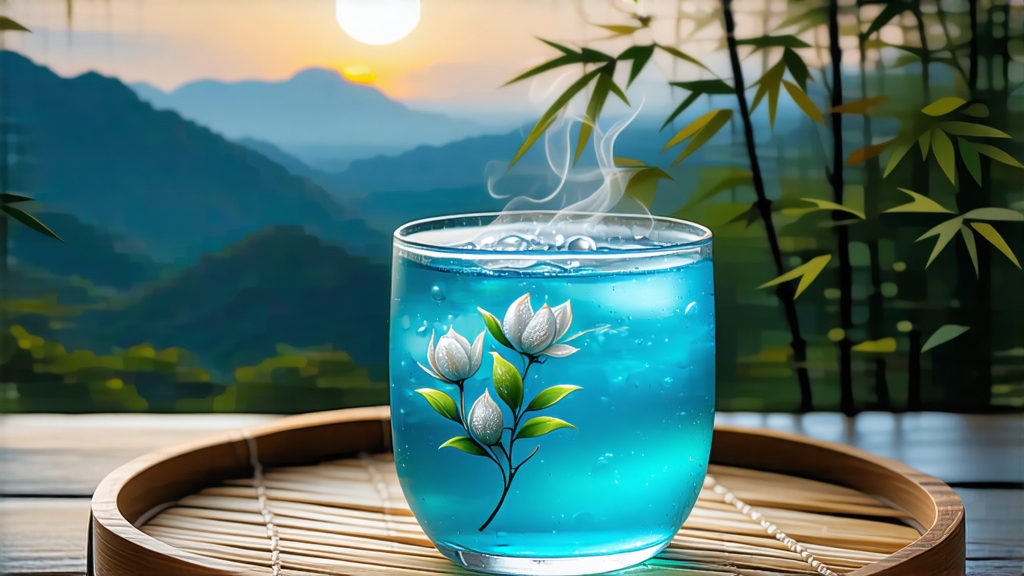
Among the six great families of Chinese tea, white tea is the least theatrical yet the most haunting: it is picked, withered, and dried—nothing else. Within this minimalist realm, Bai Hao Yin Zhen (“Silver Needle”) sits at the apex, a tea so refined that emperors once rationed it by the gram and Tang poets described its liquor as “a moon-beam dissolved in jade.” To understand China’s pursuit of purity in a cup, one must follow the needle.
Origin in mist and legend
Bai Hao Yin Zhen owes its existence to two geographic accidents: the lacustrine climate of Fuding and the Zhenghe river valley in Fujian province, where morning fog lingers until noon and afternoon sun is filtered through bamboo groves. Local lore claims the cultivar was first noticed during the Song dynasty (960-1279) by a nun who saw white-haired buds glistening on a rocky ledge; she transplanted three bushes behind her temple and called them “Xiao Bai,” little white ones. The name endured, but the tea remained a local curiosity until 1796, when a Fuding magistrate presented it to the Jiaqing Emperor. The court’s immediate fascination turned the needle into a tribute tea, and for the next century every harvest was escorted to Beijing under armed guard. Foreigners tasted it only when Russian caravans bought surplus bales on the Amur River frontier, believing the pale leaves were withered by Siberian frost.
The two gardens of silver
Today Bai Hao Yin Zhen is still produced in only two micro-zones, each yielding a stylistic dialect. Fuding Da Bai Hao, grown at 200–600 m among red-granite soils, gives needles that are plump, downy, and slightly sweet; the cooler Zhenghe county, at 400–800 m on volcanic loam, produces slimmer, more mineral-driven buds. Purists treat them as yin and yang: Fuding for fragrance, Zhenghe for structure. Both, however, must be harvested in a fleeting early-spring window when the bud is still closed like a grain of rice and the down is pearl-white. One kilogram of finished tea requires roughly 30,000 buds, all picked before nine o’clock to avoid dew that might “cook” the leaf during withering.
Crafting a tea that is almost not tea
The process is disarmingly simple yet unforgiving. After picking, the buds are spread on bamboo trays exactly one layer thick; any overlap traps moisture and breeds sourness. For the next 36–48 hours they rest in a shaded corridor where temperature drifts between 18 °C and 22 °C and humidity hovers at 65%. Here the leaf loses about 70% of its water, but the magic lies in enzymatic oxidation so gentle it is barely measurable. Masters gauge readiness not by clock or gauge but by caress: a bud that feels like chilled velvet and snaps with a whisper is ready. Final drying is done in three short passes at 40 °C, each lasting less than ten minutes; the goal is to freeze the tea at the tipping point where green notes have vanished yet black-tea tannins have not awakened. Overdrying kills the luminous “silver” aroma, under-drying invites mustiness. In the dark, the finished needles look like tiny quills dipped in frost; rubbed between fingers they release a scent of wet pebble, cucumber skin, and distant orchid.
Tasting the moonbeam
Western cupping protocols, designed for black or green tea, misread white tea’s subtleties. The Chinese approach is slower, almost meditative. Begin with a tall, thin glass; the visual drama of upright needles floating like translucent fish is part of the pleasure. Use 3 g for 150 ml, water at 75 °C—just when shrimp-eye bubbles form on the kettle bottom. First infusion: 30 seconds, no lid. The liquor is the color of morning chardonnay, the aroma a marriage of fresh lychee and rainwater on hot slate. Sip with teeth slightly apart, letting the tea cool on the tongue; you will taste a cool mentholated sweetness that arrives after swallowing, a phenomenon Chinese tasters call “returning sweet” (hui gan). Second infusion, 45 seconds: the buds begin to stand vertically, and the cup offers hints of pine pollen and steamed almond tofu. By the fifth infusion the needles are fully open, the liquor turns pale champagne, and a minerality